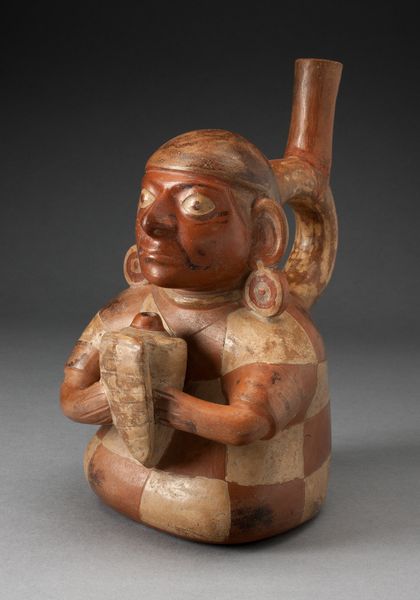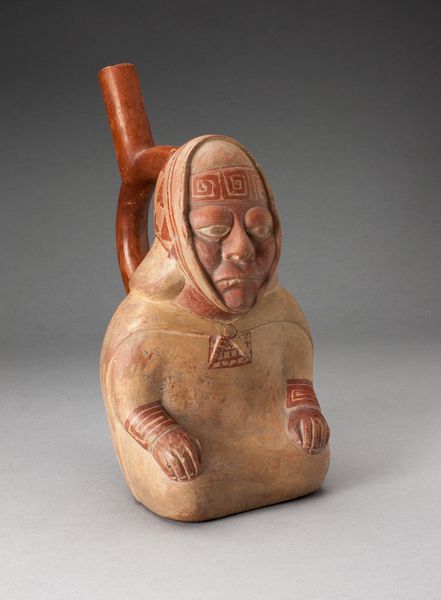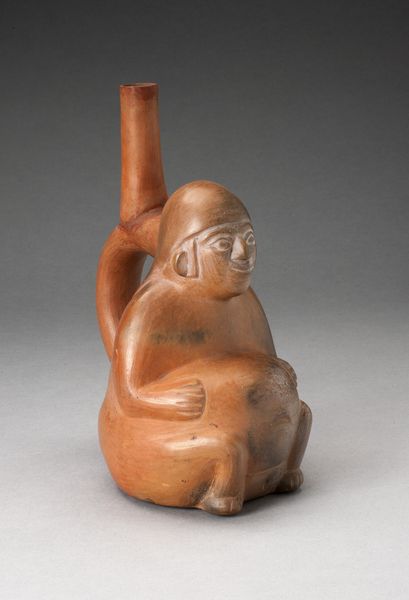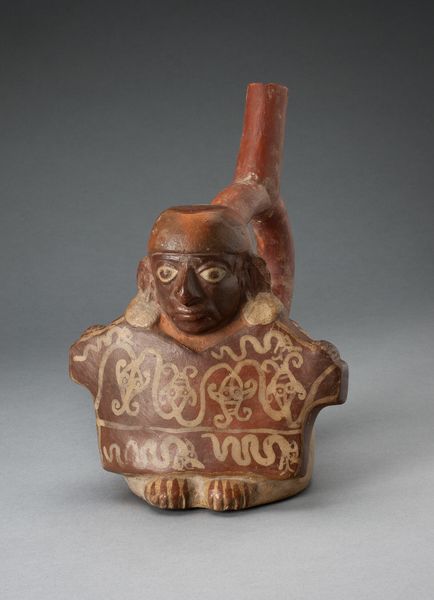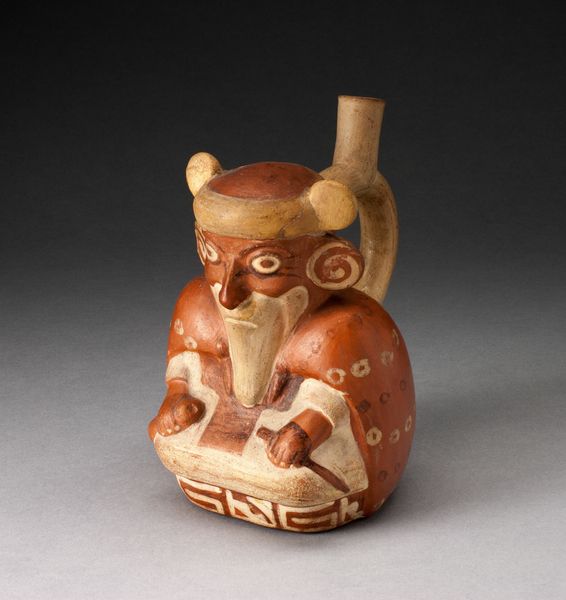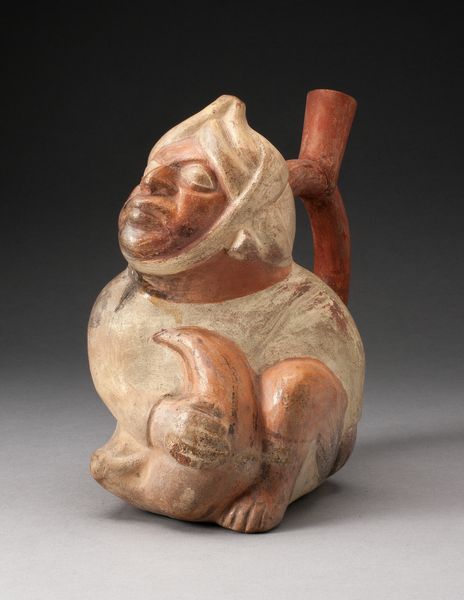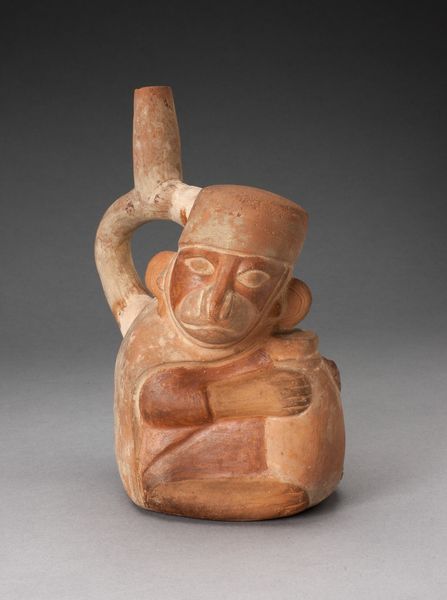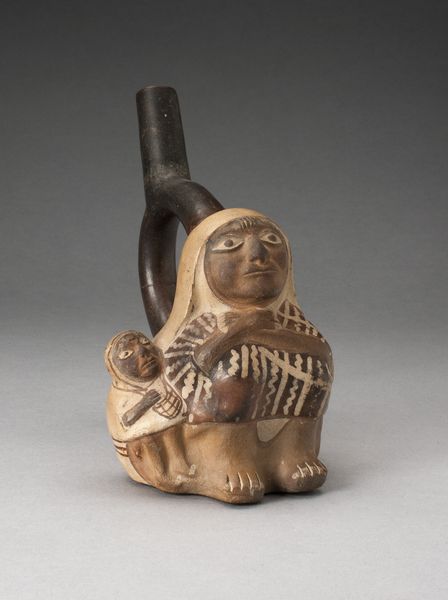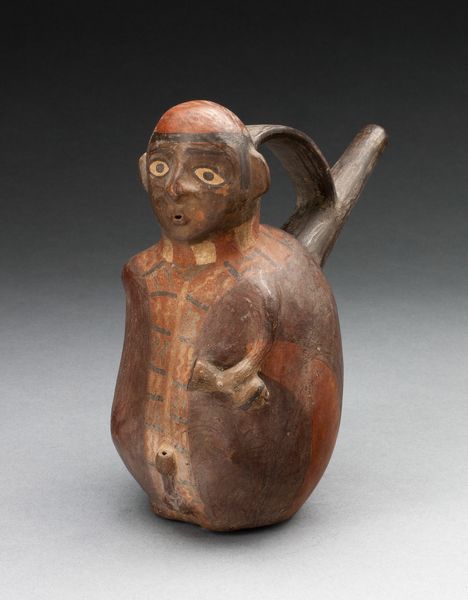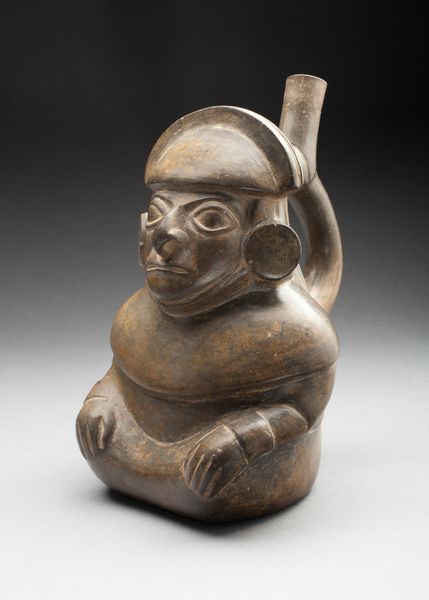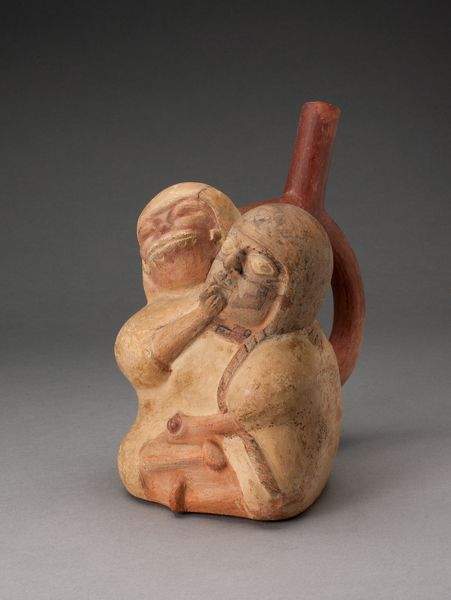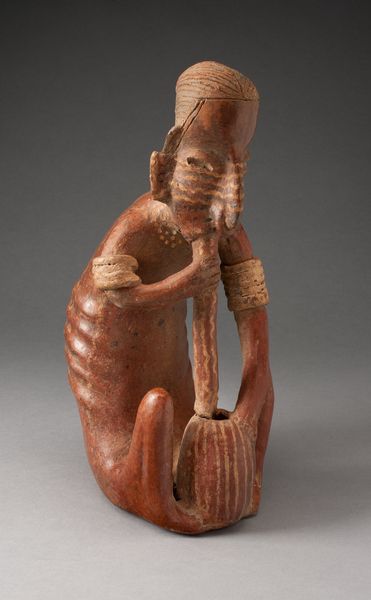
Stirrup Spout Vessel in the Form of a Seated Figure with Insects on Torso c. 100 - 500
0:00
0:00
ceramic, sculpture, terracotta
#
portrait
#
ceramic
#
figuration
#
sculpting
#
sculpture
#
terracotta
#
indigenous-americas
Dimensions: 20.8 × 17.2 cm (8 3/16 × 6 3/4 in.)
Copyright: Public Domain
Editor: Here we have a ceramic sculpture from the Moche culture, dating from about 100 to 500 AD. It’s titled "Stirrup Spout Vessel in the Form of a Seated Figure with Insects on Torso." The figure seems burdened, weighed down somehow. What do you see in this piece that reveals something about Moche society? Curator: Well, that 'burden' might be more symbolic than literal. Vessels like this, found in burial sites, suggest a belief in the cyclical nature of life, death, and rebirth. Consider how museums categorize such items, often separating ‘art’ from ‘artifact.’ This separation subtly reinforces a power dynamic, doesn’t it? Who decides what’s art and what’s simply a tool or cultural object? Editor: I see what you mean. So the insects...they are deliberately rendered on the torso to communicate beliefs about transformation? Is it also about control of resources, that kind of institutional power? Curator: Precisely. The Moche elite likely commissioned these vessels. Who controls the imagery, controls the narrative, right? The insects themselves—maybe representations of specific pests or vital components of the local ecology—could symbolize the ruling class's ability to both control nature and appease its forces through ritual offerings, perhaps the contents this vessel once held. What about the stirrup spout, then? Does its form hold additional significance? Editor: That's fascinating. The spout does look almost architectural; maybe it represents a gateway or a conduit. So the vessel becomes a symbolic link between different worlds? Curator: Exactly! And think about where we encounter this work now, safely displayed, devoid of its original function. How does our contemporary museum setting change or even limit our understanding of the object? Editor: I never considered that the display itself affects how we perceive it. Now I’m thinking about what isn't here anymore—the context of the tomb, the beliefs surrounding death. Thank you, this was really eye-opening. Curator: My pleasure. Hopefully, reflecting on these social and historical layers offers you new avenues of inquiry and understanding.
Comments
No comments
Be the first to comment and join the conversation on the ultimate creative platform.
